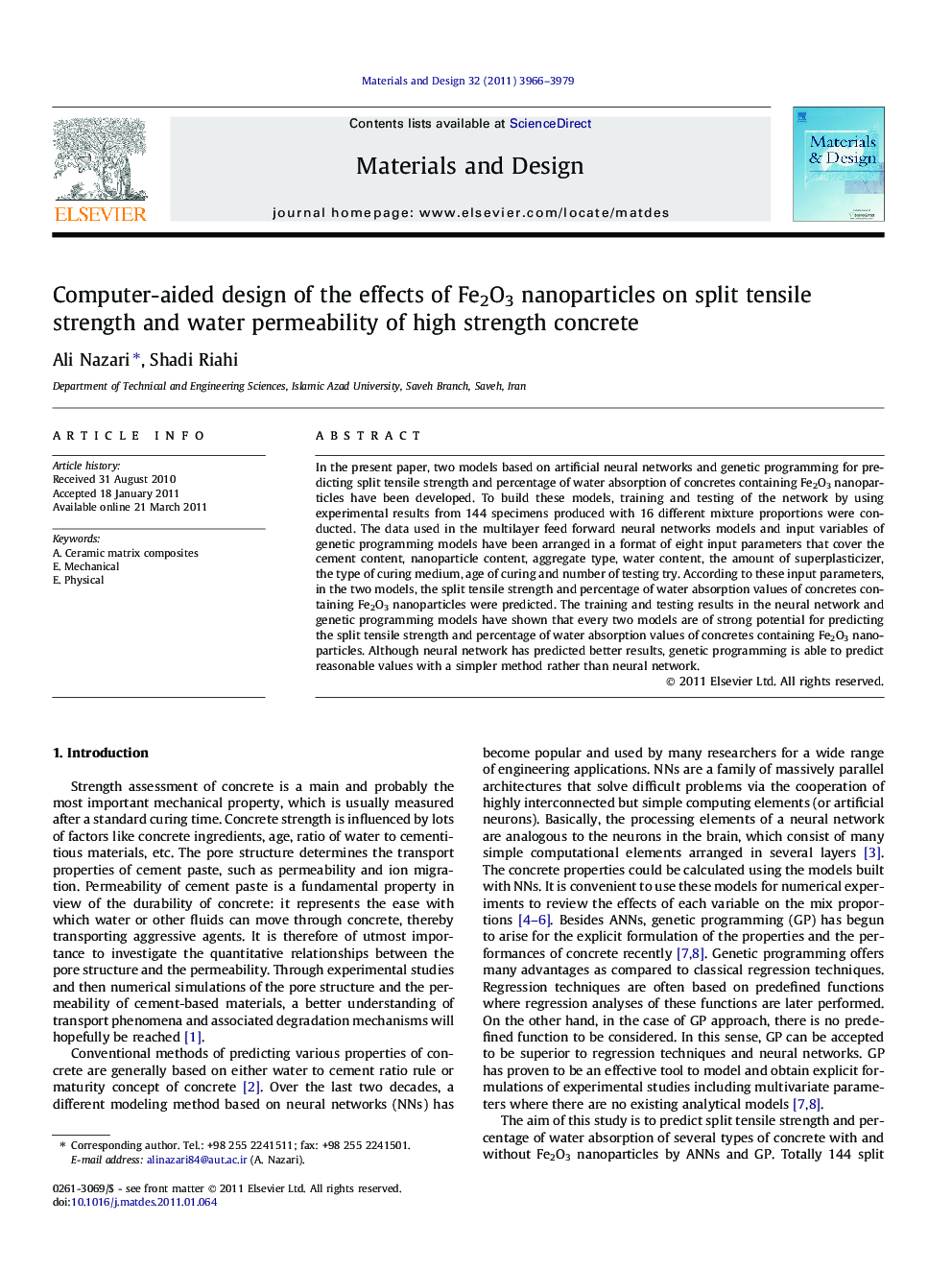| Article ID | Journal | Published Year | Pages | File Type |
|---|---|---|---|---|
| 831523 | Materials & Design (1980-2015) | 2011 | 14 Pages |
In the present paper, two models based on artificial neural networks and genetic programming for predicting split tensile strength and percentage of water absorption of concretes containing Fe2O3 nanoparticles have been developed. To build these models, training and testing of the network by using experimental results from 144 specimens produced with 16 different mixture proportions were conducted. The data used in the multilayer feed forward neural networks models and input variables of genetic programming models have been arranged in a format of eight input parameters that cover the cement content, nanoparticle content, aggregate type, water content, the amount of superplasticizer, the type of curing medium, age of curing and number of testing try. According to these input parameters, in the two models, the split tensile strength and percentage of water absorption values of concretes containing Fe2O3 nanoparticles were predicted. The training and testing results in the neural network and genetic programming models have shown that every two models are of strong potential for predicting the split tensile strength and percentage of water absorption values of concretes containing Fe2O3 nanoparticles. Although neural network has predicted better results, genetic programming is able to predict reasonable values with a simpler method rather than neural network.
► Nanoparticles in concrete. ► Mechanical properties of concrete in presence nanoparticles. ► Physical properties of concrete in presence nanoparticles. ► Artificial neural network for design. ► Genetic programming for design.
